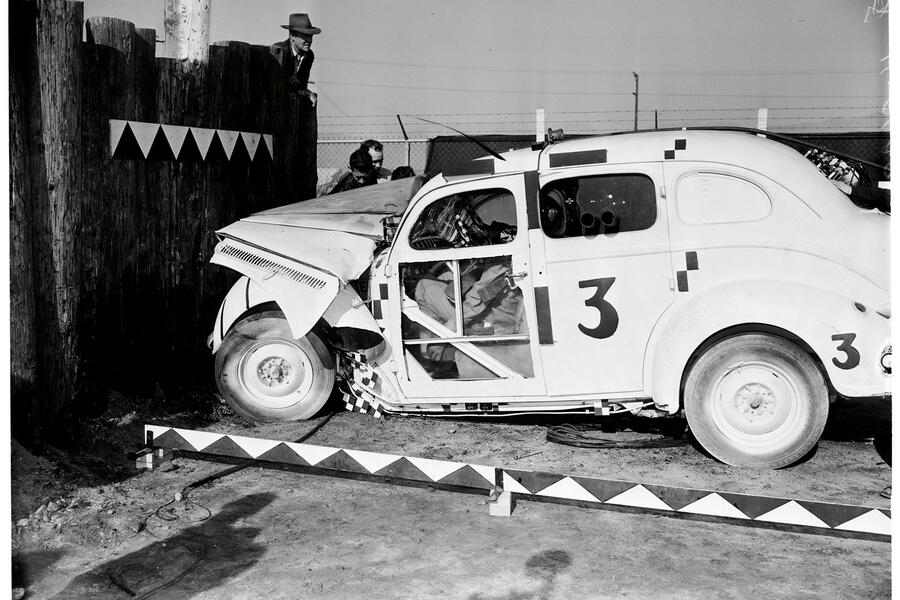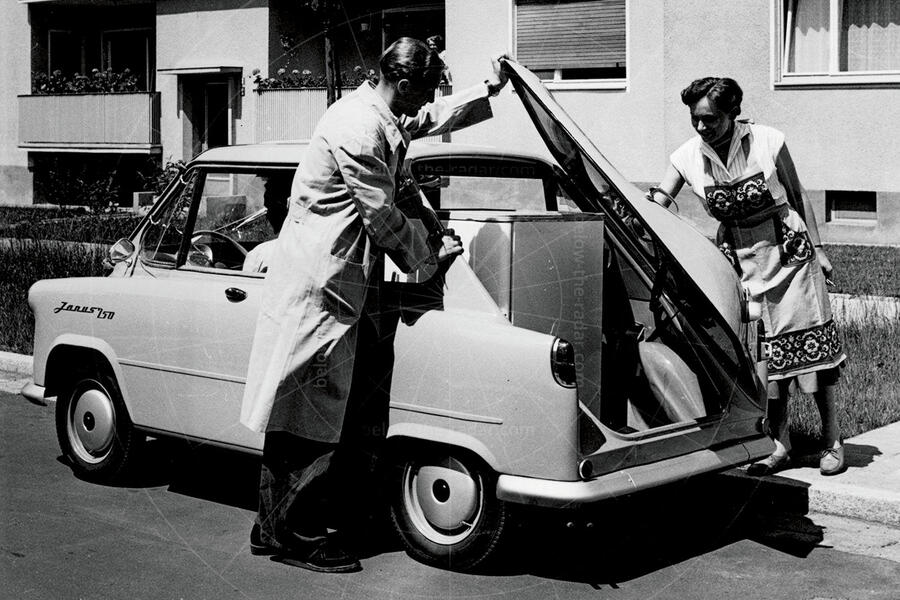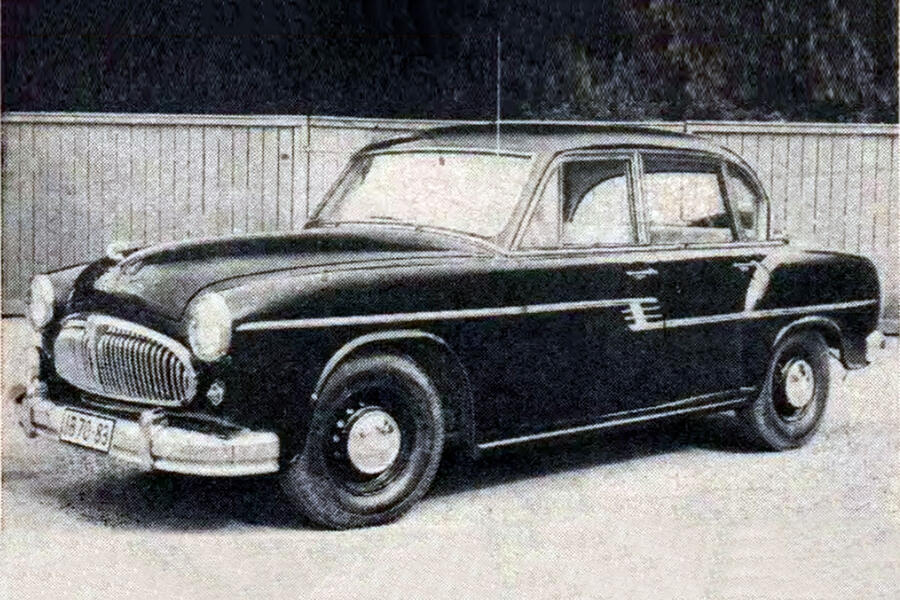Our recent scoop of the next Jaguar saloon was met with an unprecedented amount of negative letters from readers, due to a perceived abandonment of brand history and understated elegance. Let us, then, revisit a time when a new Jag was “modern, dignified and efficient” in its bodystyling: the 2.4 Litre, new junior to the Mk VII, of 1956.
A shortened and thus revvier version of the XK140 sports car’s 3.4-litre straight six offered “very high performance” (0-60mph in 15.8sec) and “quite remarkable” flexibility on top. It was smooth and quiet too, and the note we did hear was “sweet and subdued”.
We weren’t quite as bowled over by the ’box but it was still great.
The steering was “a little heavy” but had perfect self-centring and was free of vibration; bendy bits could be “negotiated with ease”.
At first the suspension felt a bit soft, but then we found that while cosseting for our passengers, it also allowed minimal body roll. The damping was tremendous as well, and the overall result was “an excellent [neutral] balance”.
Plus, a driver of “virtually any size could be completely [comfy] and remain fresh and in proper control on long journeys” in an “atmosphere of complete luxury”.
We concluded this was a very fine car indeed. A 3.4-litre version arrived in 1957, and then in 1959 “the greatest improvement so far achieved” on any Jaguar model heralded the now-legendary Mk2.
US government acts despite indifference towards safety

In 1956, Ford had the bright idea of using safety as the promotional focus of its latest model. It sold poorly – until Ford changed tack with its advertising.
“It is difficult for [foreigners] to picture the true situation,” sympathised our Detroit columnist. “Practical, bread-and-butter features like crash safety, fuel economy, seating comfort, durability may sell cars there, but not here. We buy performance, push-button gimmicks, loud colours, Buck Rogers body lines.”
Thankfully, seeing the rising casualty rate, Dwight Eisenhower’s government wasn’t similarly inclined. Its 1956 Federal Aid Highway Act had called for a report on what it could do “to promote public welfare by increasing highway safety”.
One idea was a throttle governor, but congressmen soon scrubbed that when GM sat two of them in a limited car and sent it into the path of a red-light runner!







Add your comment